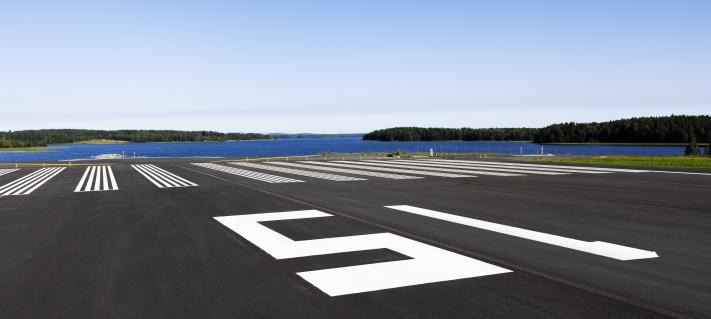Imagine that the year is 2021 and you are leaving for a trip. You sign in to Finavia’s biometric facial recognition system before your trip from home using your smartphone. When you arrive at the airport, you show your passport to the system. After that, you do not need to get out your travel documents again while moving through the airport. Instead, all identification will be done using facial recognition.
'When you arrive at the check-in counter, you will be identified by facial recognition and the employee will greet you by name. You will have time for genuine interaction, as the employee will not have to enter information on the computer and stare at the screen,' envisions Matti Lehto, Head of Ops Digitalization.
- Or, if you want to go through the automated check-in, the system will identify you using facial recognition, greet you, print your baggage tags and give you voice instructions on which gate to go to. It will also reduce your stress levels by telling you how much time you have to get to your departure gate. This way, you can visit the shops or restaurants without concern before you leave, which is also a good thing for all commercial operators.
Flow for passengers and time for staff
Biometric identification of passengers is coming to airports in the next few years. It is already in use at Schiphol airport in Amsterdam and Changi airport in Singapore.
'Those systems cannot be used to sign in beforehand at home, however, as we would like,' Lehto notes.
All airports share the same goal: to simplify and improve the flow of the passenger’s journey using biometric identification.
'If the airport shops also come on board, passengers will no longer have to show their boarding passes there and can instead be identified using facial recognition throughout the airport.'
Service in the restaurants could also be tailored so that passengers could order their food in advance online. When the passenger gets to the restaurant, they will be identified using facial recognition.
'The restaurant staff could welcome the customer by name and ask whether they want to change their order before sending the order to the kitchen. Or, alternatively, the meal could already be ready and waiting for them. The same would also apply to all purchases, of course.'
Looking for the right system
Finavia’s next step on the journey toward biometric identification is finding the right system provider. No provider has a ready-made service that would be suitable for the purpose. In addition to this, because this is such a major investment, the provider must be selected carefully through competitive tendering.
'In addition to selecting the right system provider, the most decisive questions are related to data processing. The GDPR provides clear guidelines on how the system should be designed. The data must be stored in one place that is connected to the systems used by the different parties operating at the airport.
According to Lehto, the goal is for the ownership of the data to remain with the system user (the passenger) and for each service provider to be able to access only the information required to produce its service. This way, operators would not store individual persons’ data.
'One possible solution would be for Finavia to use a third party’s biometric personal data system with permission from the customer. In this case, Finavia would not need to store customers’ biometric identifiers. An example of such a system is the authorities’ passport database', Lehto says.
'When the passenger goes on to security control, they have already been identified. This would also provide the Finnish Border Guard with the information it needs on who is leaving on trips outside the Finnish borders.'
According to Lehto, one of the challenges in designing the new system is the large number of parties involved. Each one also has slightly different needs and goals when it comes to digital solutions.
'For example, customs would like to offer passengers precisely tailored information according to their passenger profile and destination. They would like to provide passenger-specific information on the customs rules. However, all airport operators want to achieve transparency and a good flow in their operations.'
Read more about biometric identification and the Helsinki Airport pilot in part 1



